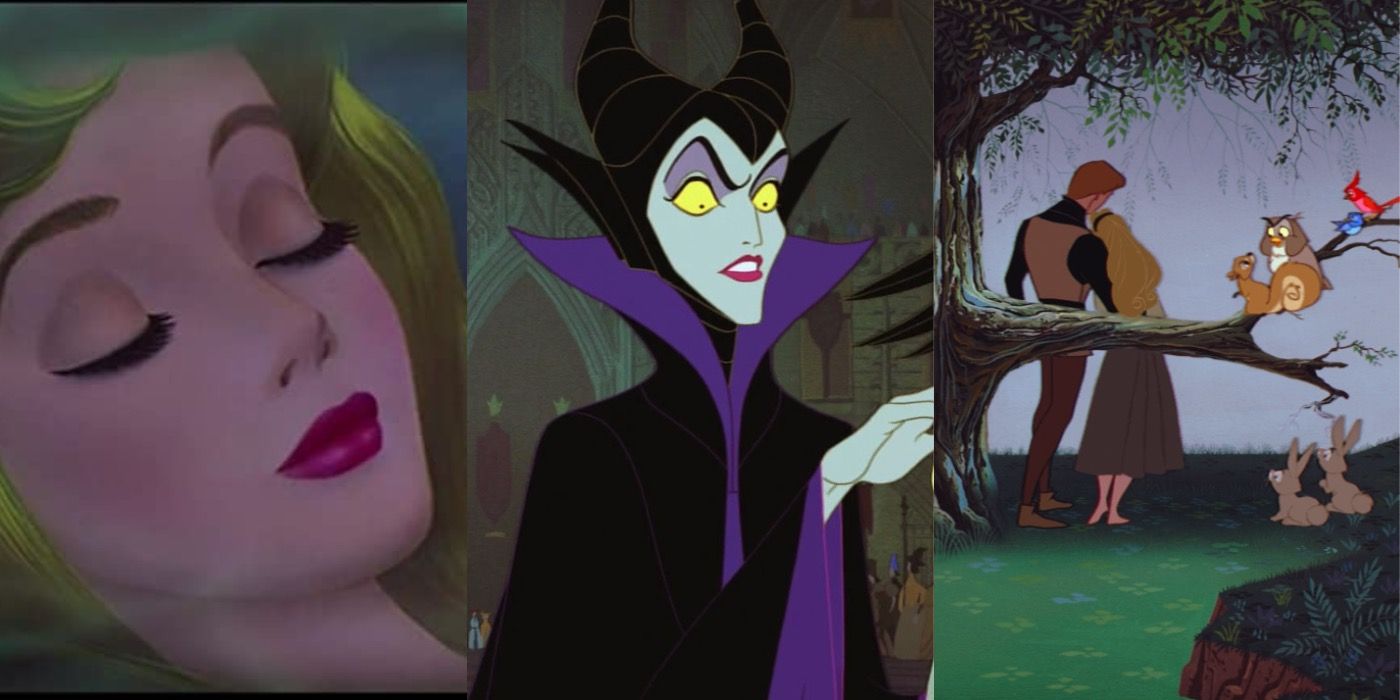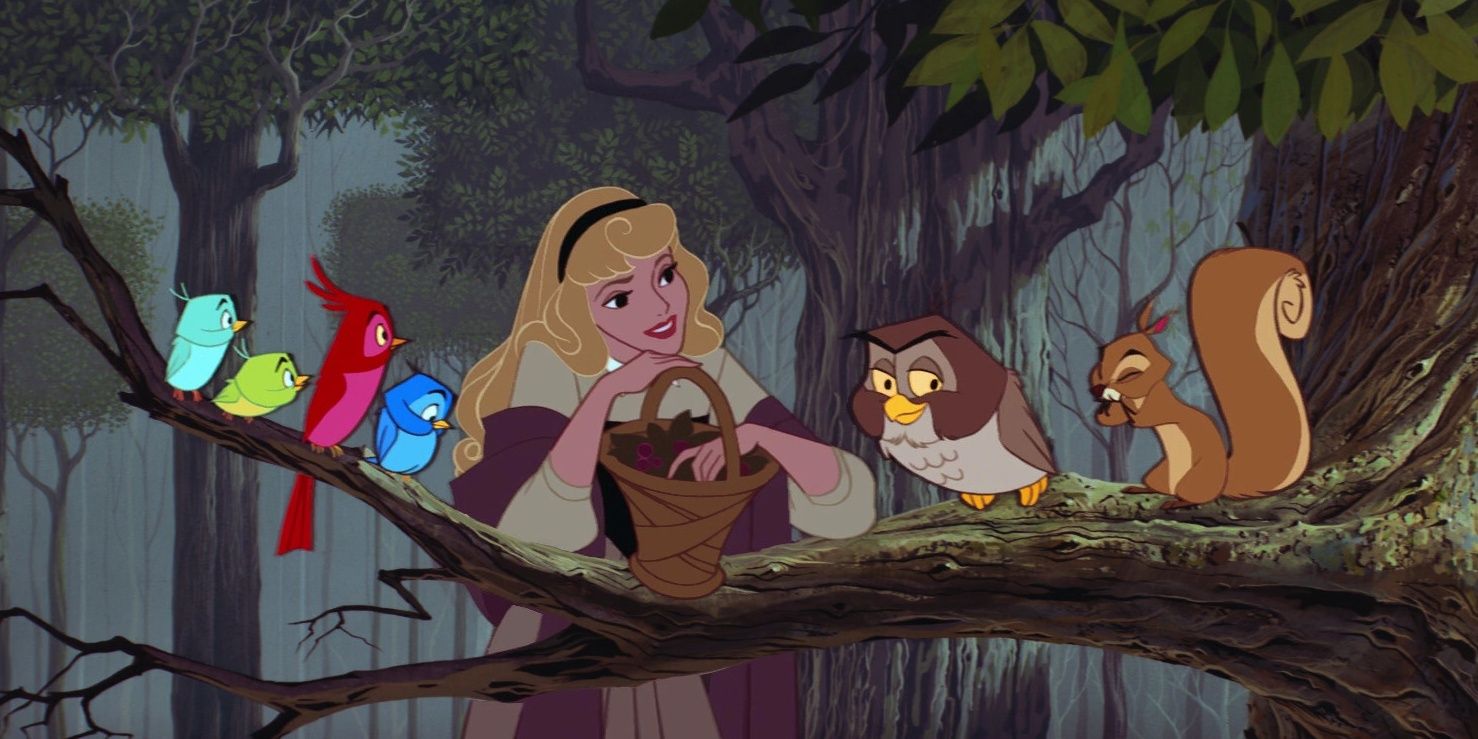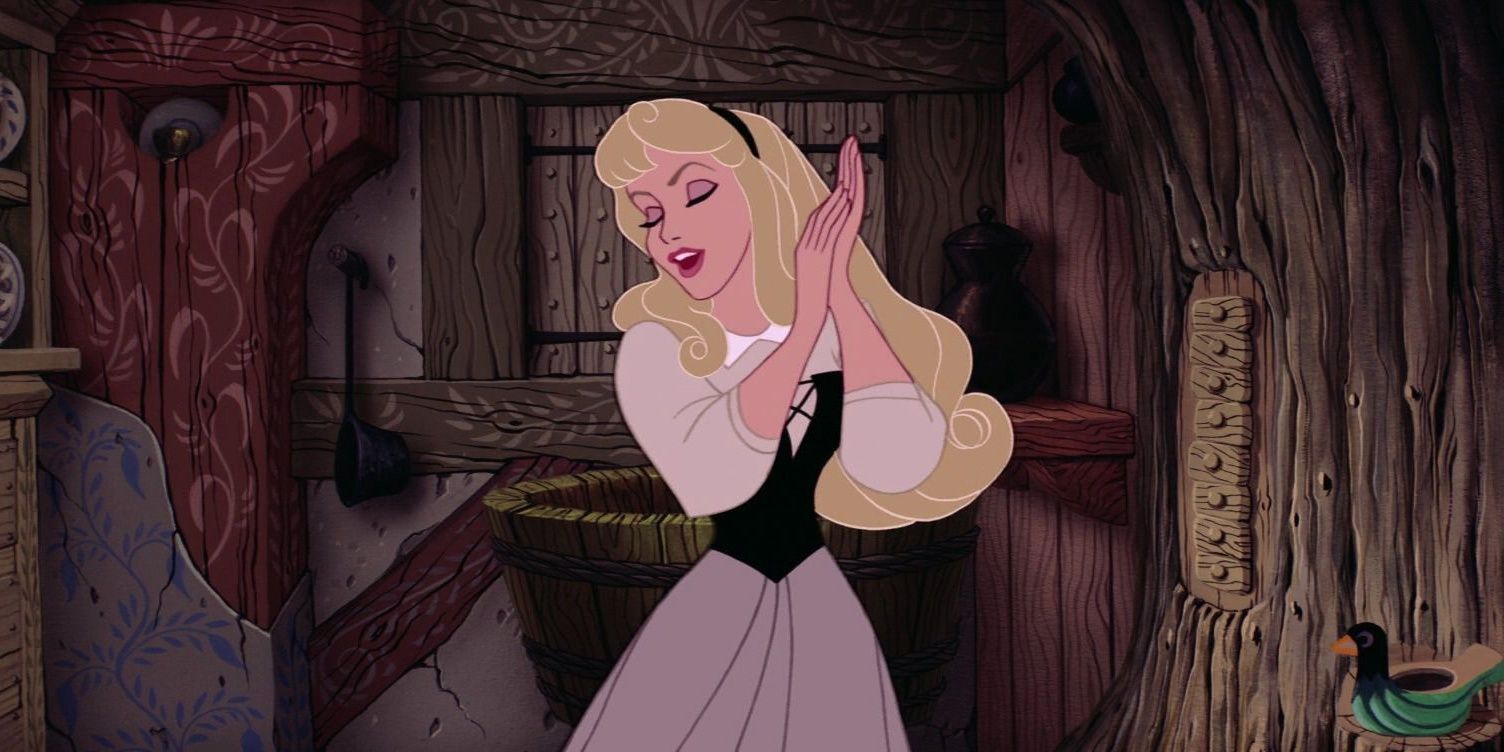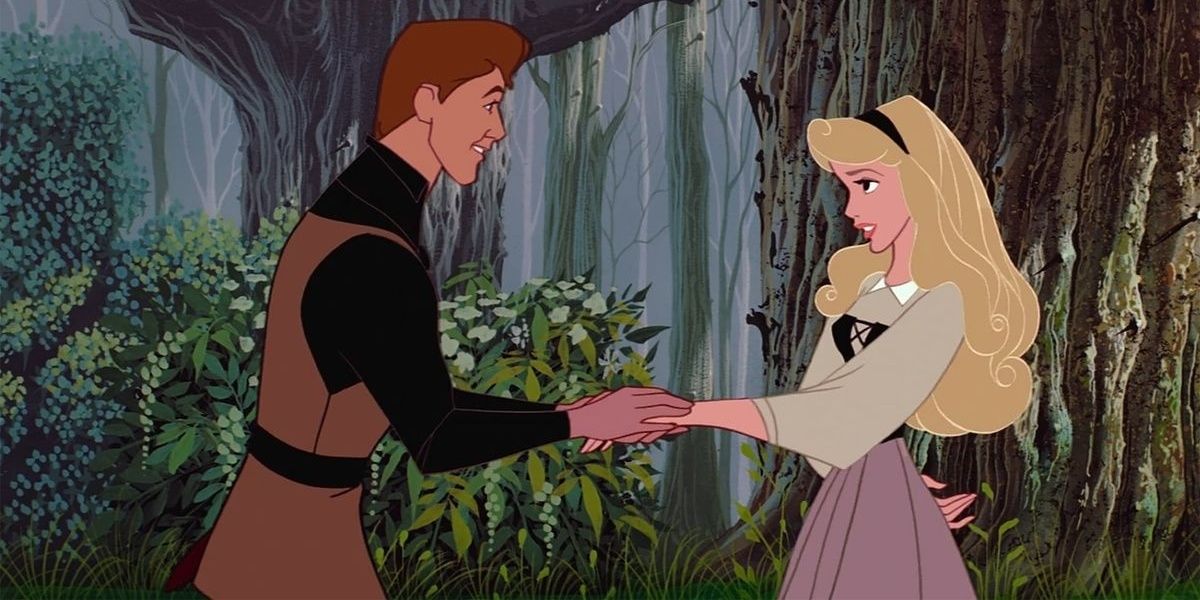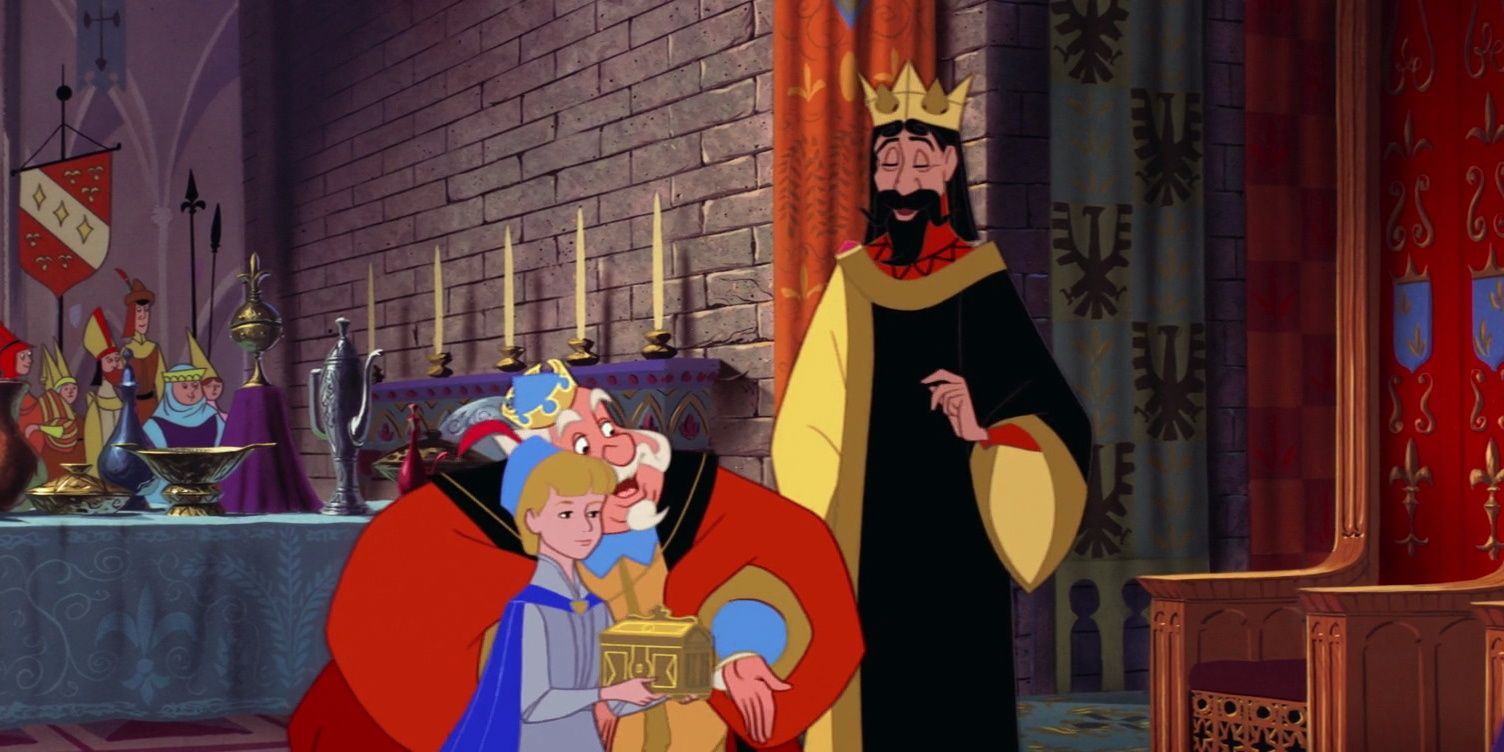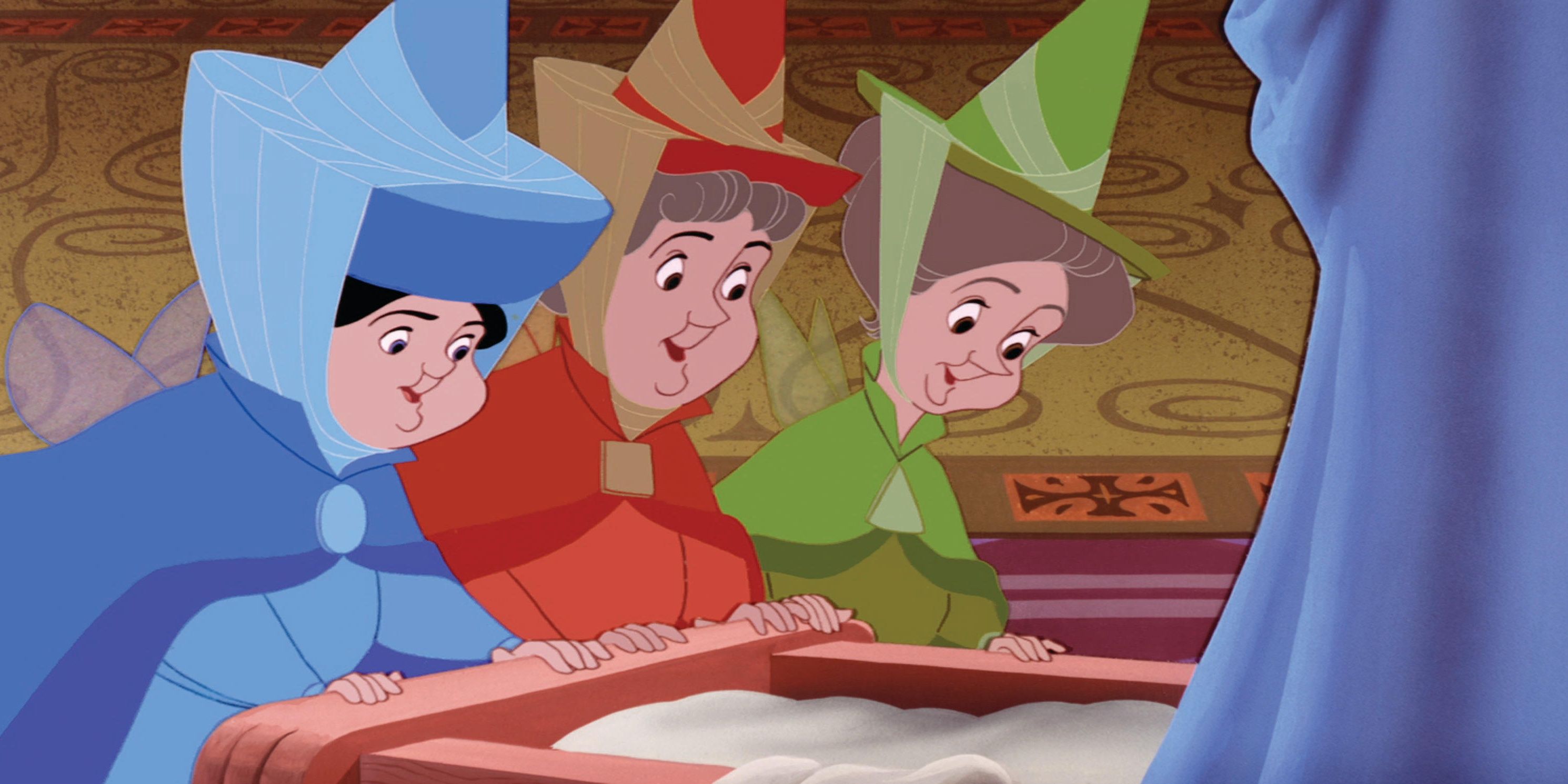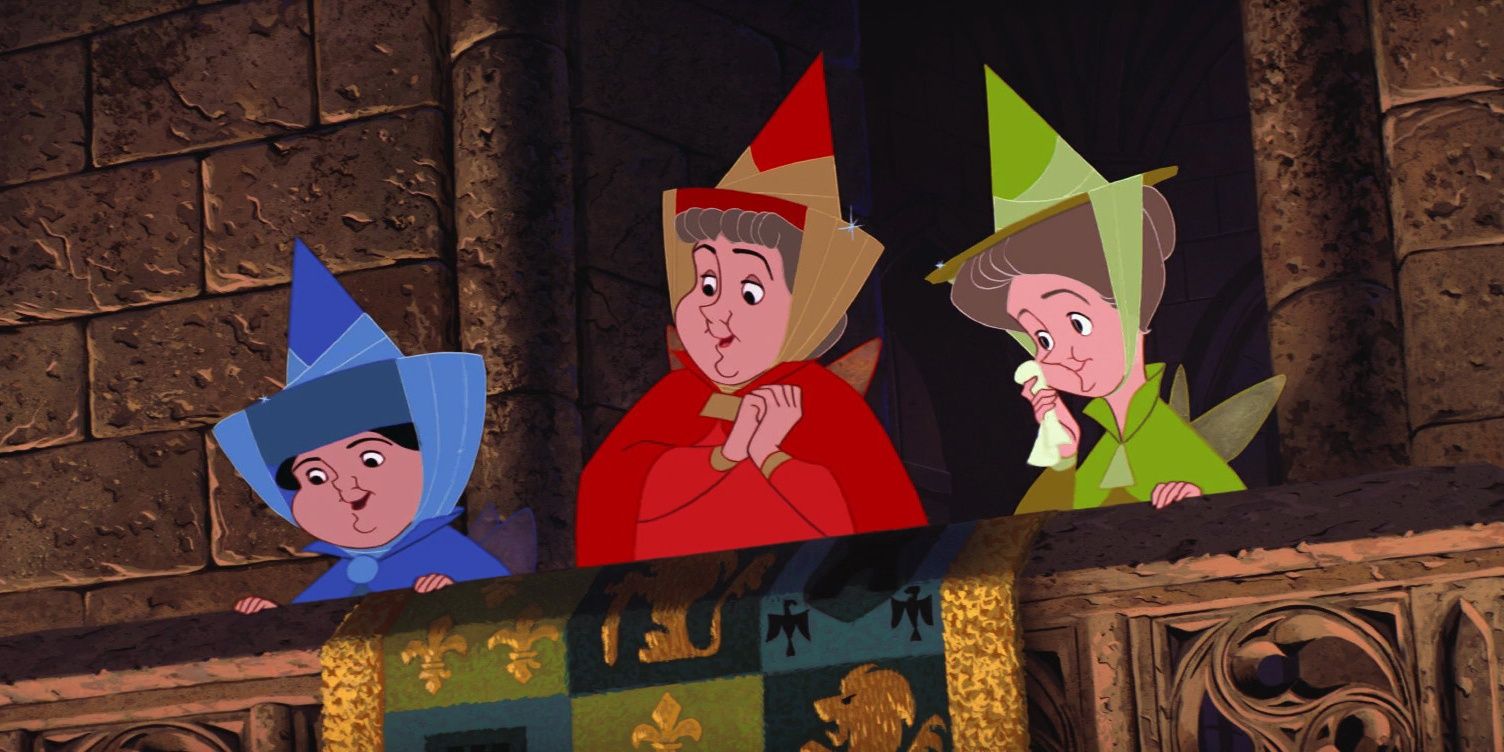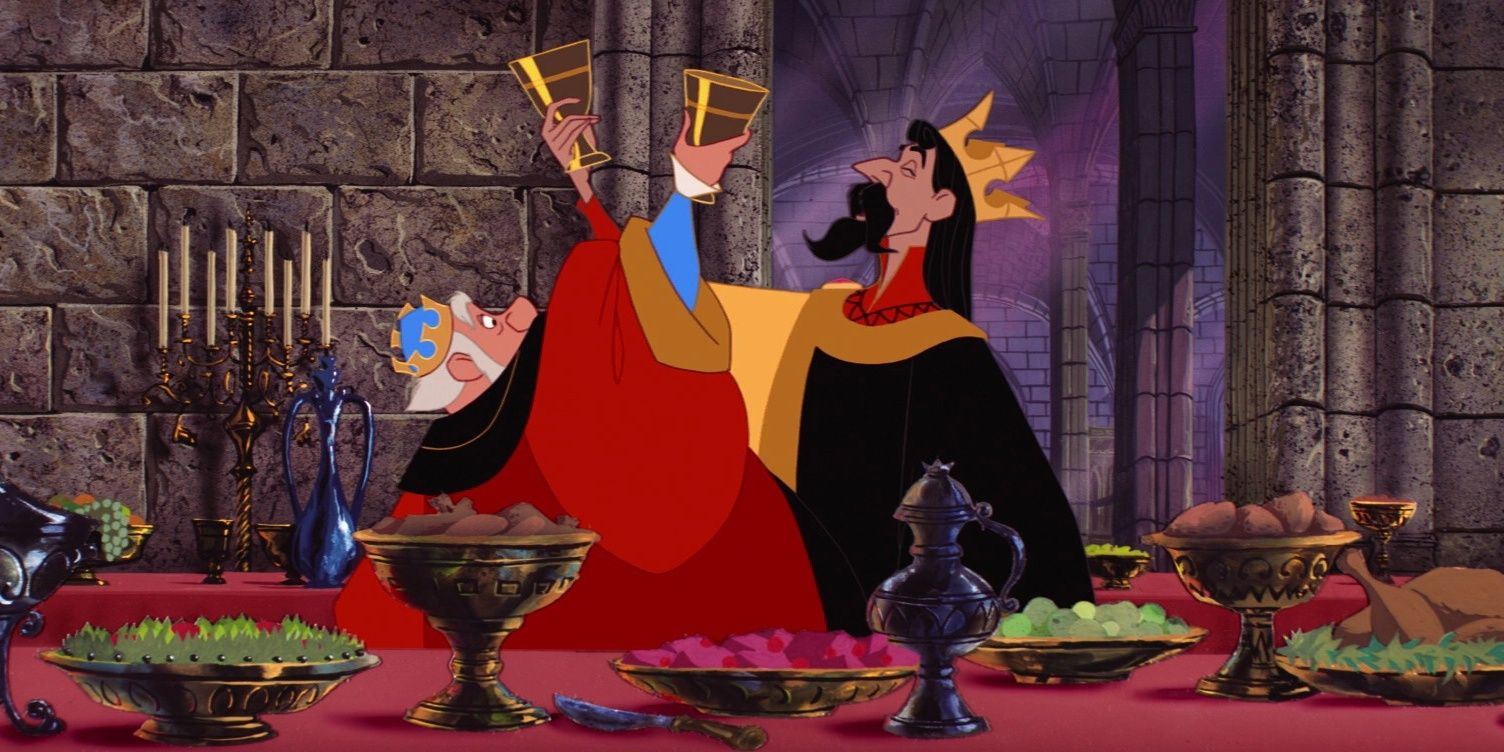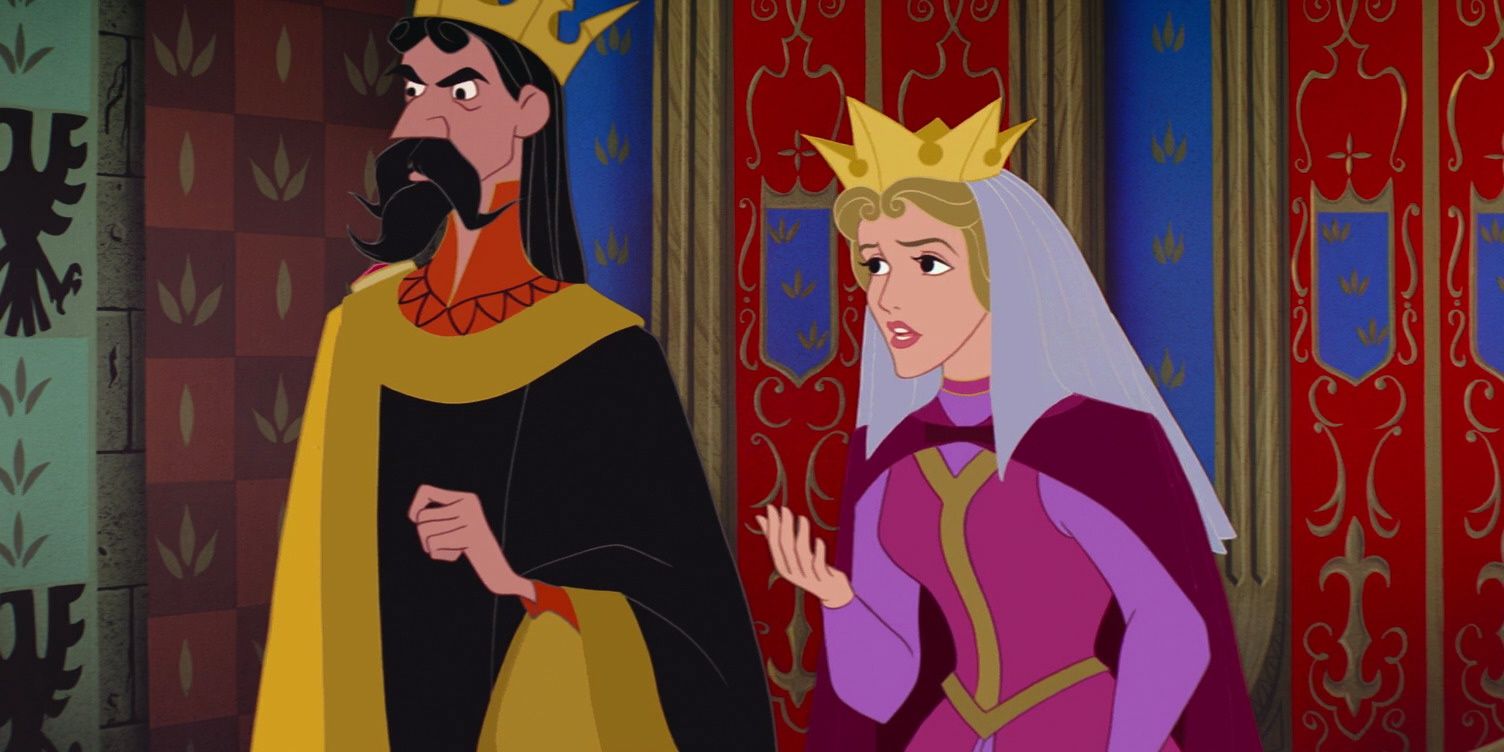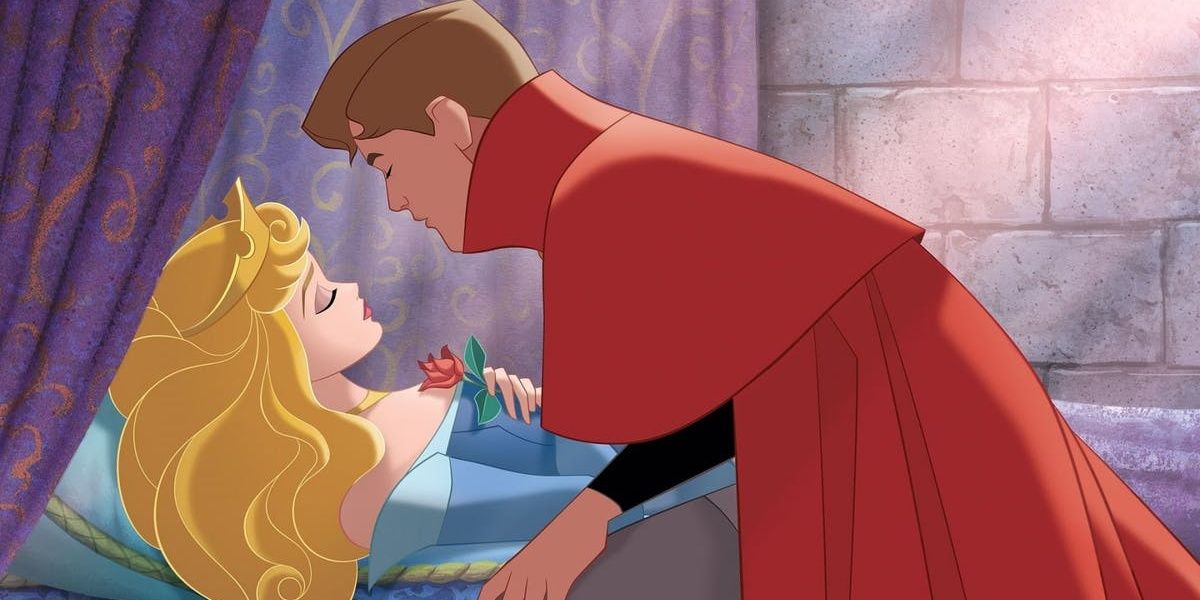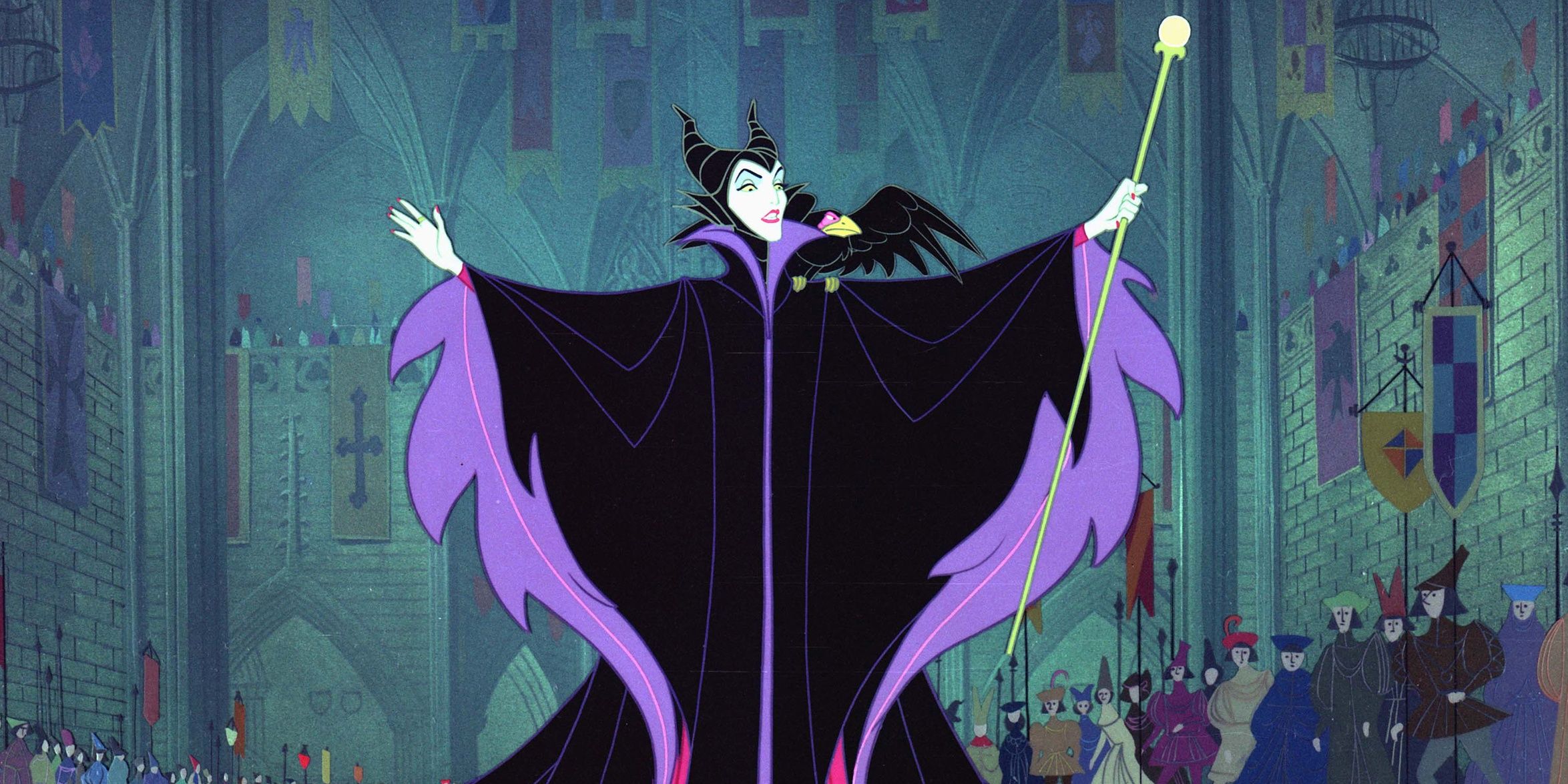Disney's 1959 animated musical Sleeping Beauty is certainly one of the many classic fairy tale adaptations that haven't aged well. The Disney princess's magical tale originated from the original work The Sun, the Moon, and Talia which was composed by the Italian poet Giambattista Basile and published in 1634.
The Walt Disney family-friendly version tells the story of a beautiful princess named Aurora who is cursed to die on her sixteenth birthday by the evil witch Maleficent. Her curse is lessened by the good fairy Merryweather and instead of dying, Aurora falls into a deep sleep that can only be awakened by true love's kiss. While the film itself is visually stunning in terms of the design structure and its classic story has inspired countless others, not everything about this film is magical. Here are some of the most notable issues seen in this Disney animated classic.
Animal Sidekicks Cliché
One of Disney's common tropes that have been parodied by other films like Dreamwork's Shrek is the movie's princess or heroine talking to animals. While it may have seemed like a cute idea at one point in time, the friendly animal sidekicks were such a trend with Disney films that it became more of a stereotype to have a human-like animal buddy than a unique concept. Nowadays, it's so commonplace that even the spunkiest of furry little friends just seems like the same old shtick.
Princess Plot Device
Despite being the title character of the classic Disney film, Sleeping Beauty's Princess Aurora never becomes a fully developed character during her time on-screen. In the early parts of the film, she's only an infant and then is briefly introduced to the audience as a teenager during the forest scene where she meets Prince Philip. Though Aurora isn't unlikeable, she simply doesn't do much during the film other than further other character's developments as they try to save her from Maleficent. She also conforms to plenty of the classic princess clichés such as talking to animals and instantly falling in love with a man she just met. Though Disney princesses have certainly come a long way since the '50s, it only shows off the stark difference from the simplistic formulas of the female leads in earlier films.
Instant Love
After Prince Philip happens to encounter Aurora (who goes by Briar Rose) in the forest he naturally falls in love after finding himself drawn to her beautiful singing voice. The two sing and dance briefly before Aurora runs off after refusing to tell Prince Philip her name.
When she arrives home the good fairies are dismayed to realize that the princess has fallen in love and tell her that she is betrothed to a prince before revealing her true identity. The idea of love at first sight is hardly a new concept and was quite popular with other Disney heroines as well such as Snow White and Cinderella. Even so, the cliché is often criticized for being a deceptive and unrealistic concept in regards to love and romance.
Arranged Marriage
Though it may have been commonplace during the era in which the film takes place, the idea of a newborn being betrothed to a young boy isn't as well-received now as it may have been during the 14th century. Young marriage is a commonly brought up theme in the film after the two royals meet unaware of each other's status. Aurora is told by the good fairies that she has been betrothed since the day she was born and will marry a prince, which she tearfully excepts as unfair, meanwhile, Prince Philip is criticized by his father and told he cannot give up his birthright to marry someone seen as "nobody." Nowadays the idea of being forced to marry a stranger against your will is hardly considered romantic.
Superficial Gifts
Following the visually striking storybook style introduction of Sleeping Beauty, the kingdom is celebrating the birth of Princess Aurora. At her christening, the three good fairies arrive to bestow gifts to the newborn. Flora gives baby Aurora the gift of beauty, Fauna gives the gift of song, and Maleficent interrupts before Merryweather can give the baby her gift. Still, while there's absolutely nothing wrong with being beautiful or having a lovely singing voice, these gifts promote the idea that superficial qualities are the most highly desirable for a woman. Though the idea is nothing new, nowadays young girls are encouraged to set higher goals for themselves beyond the basic physical stereotypes.
Good Fairy Protagonists
Despite being the title role, Aurora is really a secondary character in her own film, while the three good fairies Flora, Fauna, and Merryweather are the true stars. Unlike the princess, the good fairies all have distinctive personalities and are engaging throughout the film. Though they are not without personal faults and are limited by their time period setting, overall they are significantly more developed than Aurora. This hasn't gone unnoticed by critics, who've pointed out that the good fairies are the ones who make all the critical decisions in the film, instead of the heroine.
Teen Parents
Though it wasn't uncommon for the 14th century, it's no longer seen in a positive light to promote teenagers to get married and have babies. Sleeping Beauty is set in a time period during which the human life span was significantly shorter than it is now and being sixteen was considered a perfectly normal age to be married and having children of your own.
However, nowadays a sixteen-year-old isn't even considered a legal adult, and the thought of parents pushing some at that age to have a child would undoubtedly receive high amounts of criticism. Watching King Hubert eagerly push for grandchildren as soon as possible isn't exactly an ideal that would receive praise today. Neither is King Stefan's agreement to have royal woodcarvers immediately start making baby cradles before Aurora has even returned to the castle.
Queen Who?
Though she is credited by Disney as Queen Leah, in the film Sleeping Beauty the Queen is only ever mentioned in the third person by the narrator as "the Queen." Perhaps it's a small step up compared to Disney's typical preference for title characters having deceased mothers, but in instances, like Sleeping Beauty the mother character is only alive in image alone. Viewers never see her engage with other characters as they do with King Stefan and his good friend King Hubert. She is a minor character, despite being in a role that should hold importance. The Queen's generic character and lack of presence have been a point of criticism that has been brought up when critiquing the film and is certainly one of the things from this classic Disney film that hasn't aged well.
Kissing An Unconscious Woman
Disney's Sleeping Beauty omitted the darker elements from the original versions of the folk tale. Still, in modern times this classic fairy tale isn't without criticism for its issue of non-consent. The then common cliché of true love's kiss is used on the unconscious princess as the solution to lifting both Aurora's curse as well as waking up the entire sleeping kingdom. The issue of consent undoubtedly raises some questions on appropriate sexual behavior in an era where issues of sexual assault and harassment are taken very seriously.
Stereotype Reinforcement
While there are plenty of Disney films that could be criticized for pushing black and white stereotypes in their films, nowadays even children's movies acknowledge more of the grey areas. While the character Maleficent is often praised for being a strong and powerful villain that doesn't fall victim to the bumbling oaf stereotype of other Disney films, she is still criticized in Sleeping Beauty as an evil, unreasonable, and unhappy woman with no understanding of goodness that comes from kindness or love. In opposition, the good characters conform to the social norms of the 14th century and women like Aurora and the Queen who are meant to be role models come off as passive one-dimensional figures. Not exactly positive by today's standards.

